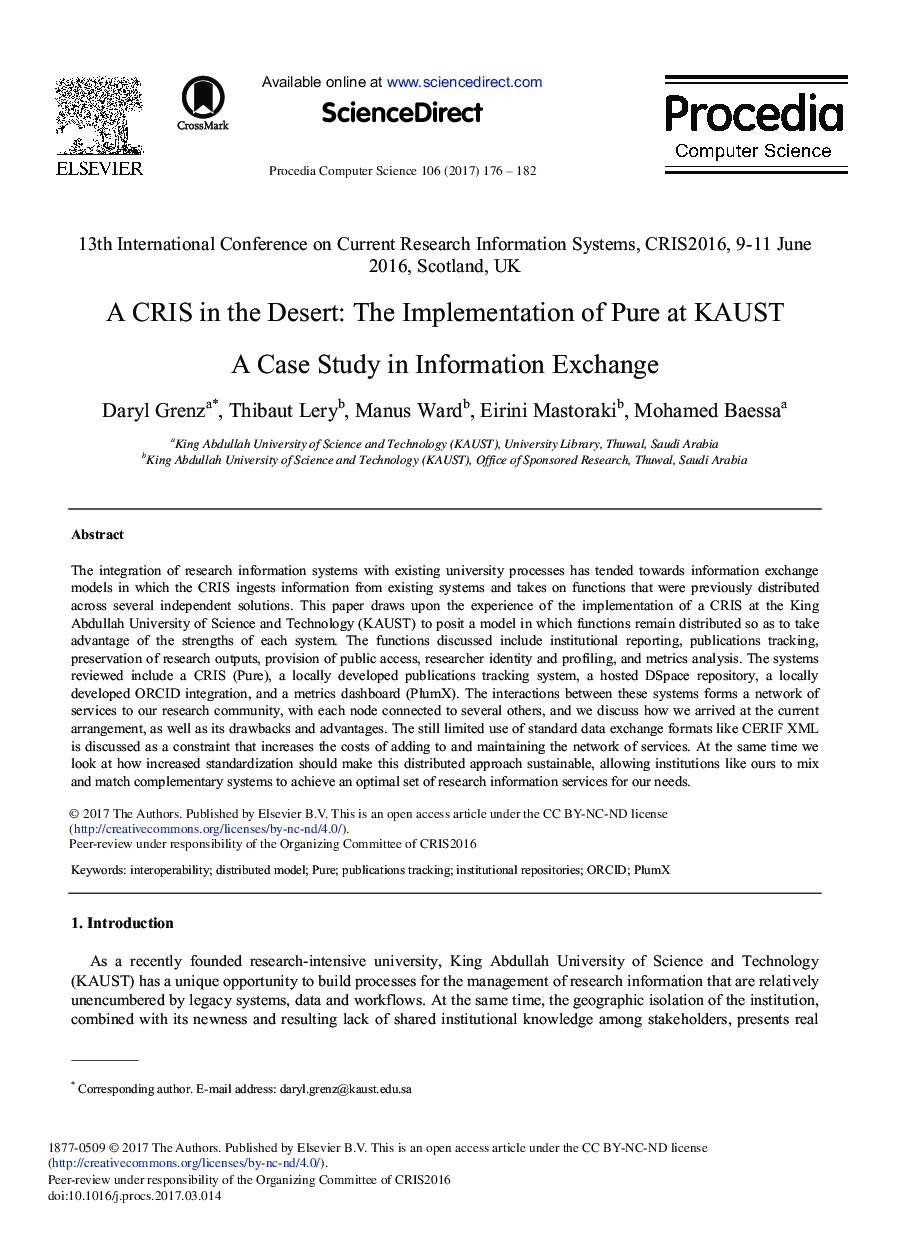| Article ID | Journal | Published Year | Pages | File Type |
|---|---|---|---|---|
| 4961264 | Procedia Computer Science | 2017 | 7 Pages |
The integration of research information systems with existing university processes has tended towards information exchange models in which the CRIS ingests information from existing systems and takes on functions that were previously distributed across several independent solutions. This paper draws upon the experience of the implementation of a CRIS at the King Abdullah University of Science and Technology (KAUST) to posit a model in which functions remain distributed so as to take advantage of the strengths of each system. The functions discussed include institutional reporting, publications tracking, preservation of research outputs, provision of public access, researcher identity and profiling, and metrics analysis. The systems reviewed include a CRIS (Pure), a locally developed publications tracking system, a hosted DSpace repository, a locally developed ORCID integration, and a metrics dashboard (PlumX). The interactions between these systems forms a network of services to our research community, with each node connected to several others, and we discuss how we arrived at the current arrangement, as well as its drawbacks and advantages. The still limited use of standard data exchange formats like CERIF XML is discussed as a constraint that increases the costs of adding to and maintaining the network of services. At the same time we look at how increased standardization should make this distributed approach sustainable, allowing institutions like ours to mix and match complementary systems to achieve an optimal set of research information services for our needs.
